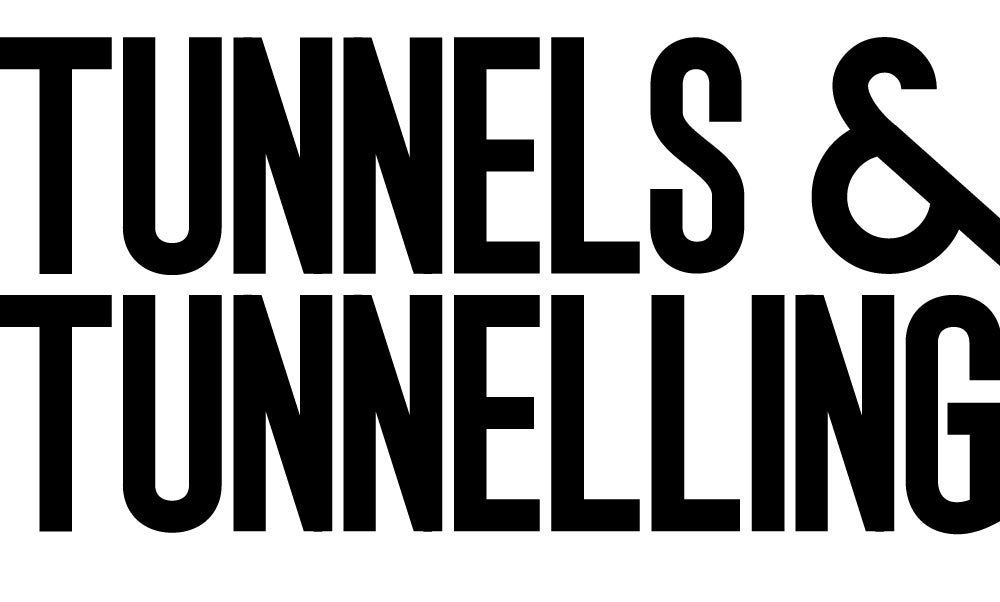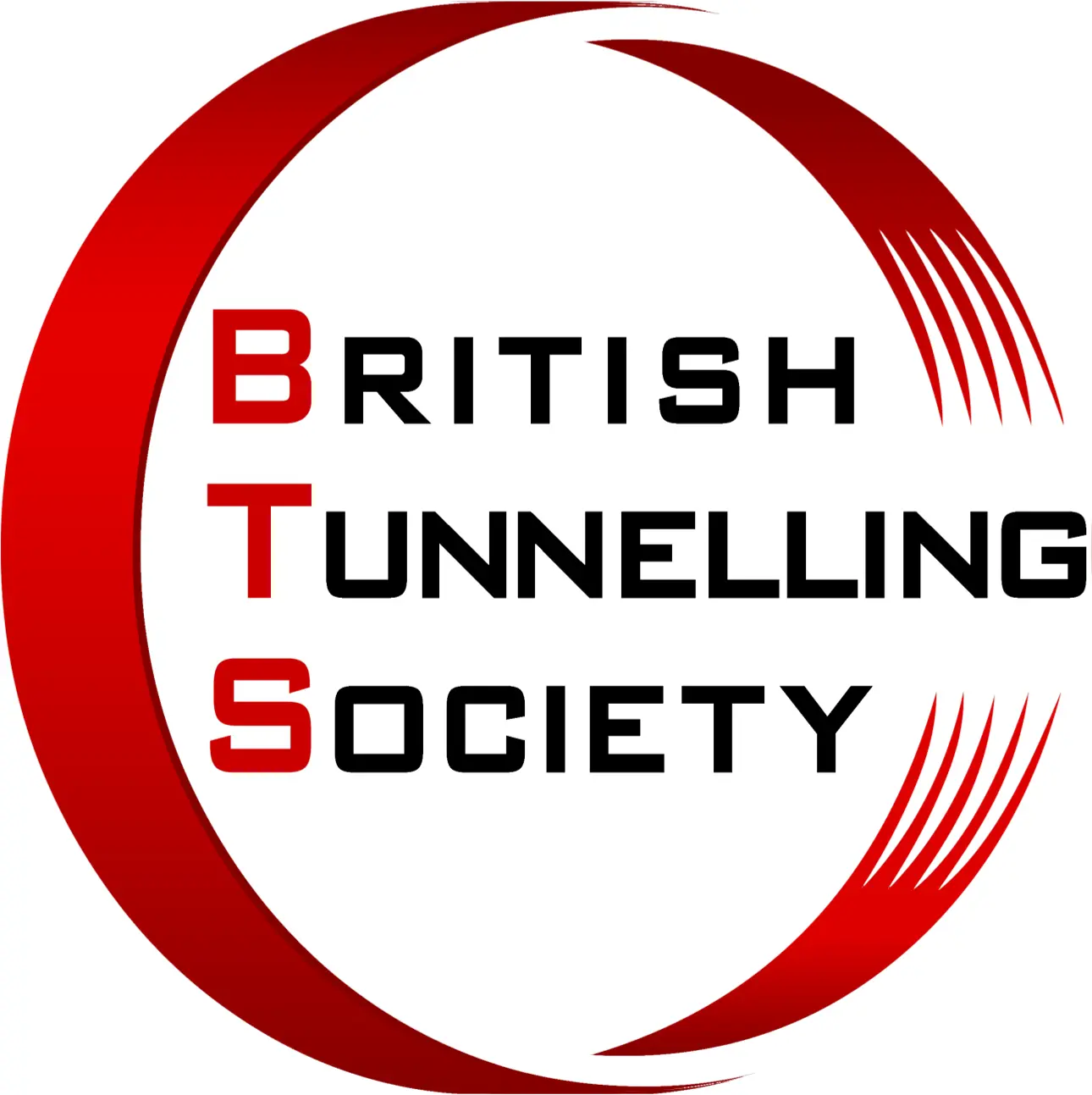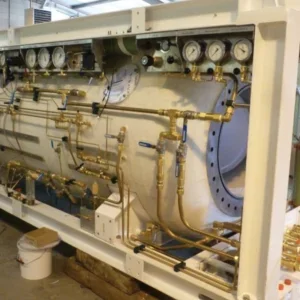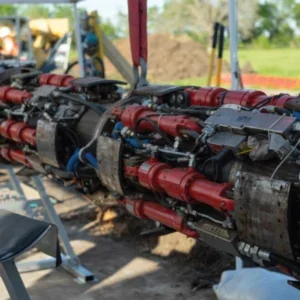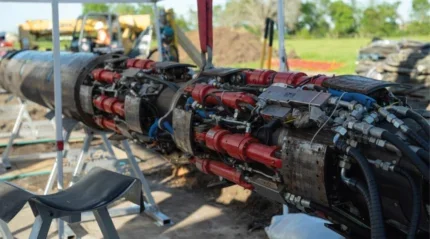
TUM Boring from the Technical University of Munich has won The Boring Company’s Not-a-Boring Competition three times, but perhaps what is more impressive is that this year they set a new distance record for the competition.
Achieving a competiton record of 22.5m, the team nearly doubled their 2023 distance of 11.8m and outbored their competitors’ single-digit achievements.
TUM Boring project manager Felix Blanke attributes the team’s convincing win to the thorough testing done in Munich before the container-load of equipment was shipped to Bastrop, Texas for the competition.
“For a lot of our competitors, the first time they had their machine up and running was at the competition site. For us it wasn’t about testing or improving our machine, it was about executing our plan and completing the drilling,” said Blanke.
Also, unlike other teams, TUM Boring opted for pipejacking – an approach they have used in all the competitions. The basic layout is a jacking frame, a cutterhead and a cutter wheel, all able to fit into a 40ft-long shipping container that provides the form factor and also makes transport logistics easier.
While the pipejacking concept has been retained – a jacking frame inside the shipping container with the same hydraulic power-pack to propel the pipes forward – this year TUM Boring made some notable changes. The most significant change, said Blanke, was to install the power electronics for the electric cutterhead underground.
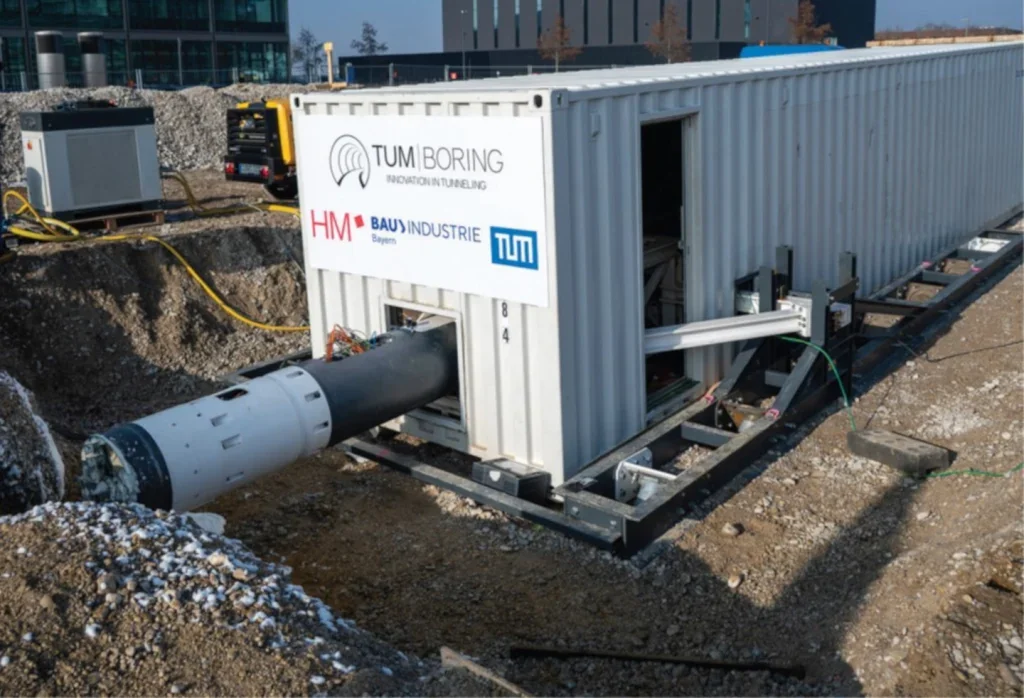
Previously, these were installed in the shipping container, above ground in the starting pit. They have now been fitted inside the first tunnel segment, the so-called Power Pipe, which also contains the soil conditioning, hydraulics and navigation system. For the five electric cutterhead motors, this allows the team to reduce the number of power cables and connectors from five to one and data cables and connectors from five to two (two for redundancy). This saves resources, frees up critical installation space and reduces downtime during the pipe connection process.
The team also found a new solution to anchor the machine, which pushes forward with a propulsion force of up to 1,000kN.
In 2021 they considered earth screws to anchor the container but decided against them because of the engineering effort required, the need for special installation equipment and the uncertainty of whether the screws would hold in the given ground conditions. Instead, they opted for concrete blocks behind the boom sections that go through the container walls from the jacking frame, so the frame pushes against a wall of concrete.
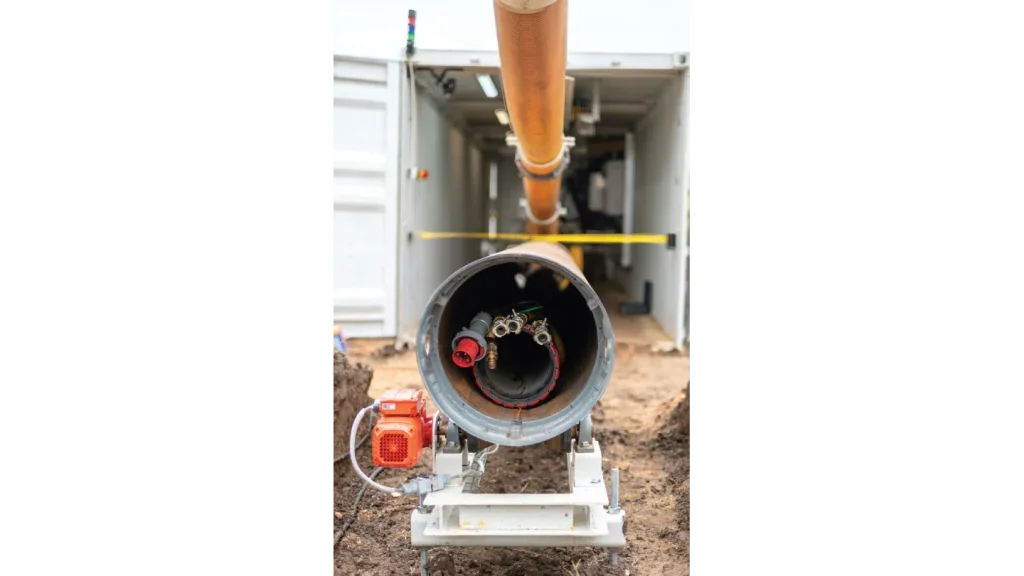
For 2025, the team returned to the idea of ground screws and were determined to make it work.
“We did a lot of testing with the screw manufacturer to determine how much force one screw could absorb and how many we would need for safety,” said Blanke.
The resulting system comprises seven screws on each side of the container, screwed in at a 45° angle and connected to the jacking frame through a steel frame.
To achieve the desired load capacity, the screws can be extended up to a depth of 5m to reach the desired soil layer.
Blanke said the system worked perfectly although it requires more effort to install. Using an exacavator to install the screws is a challenge, but the testing in Munich paid off.
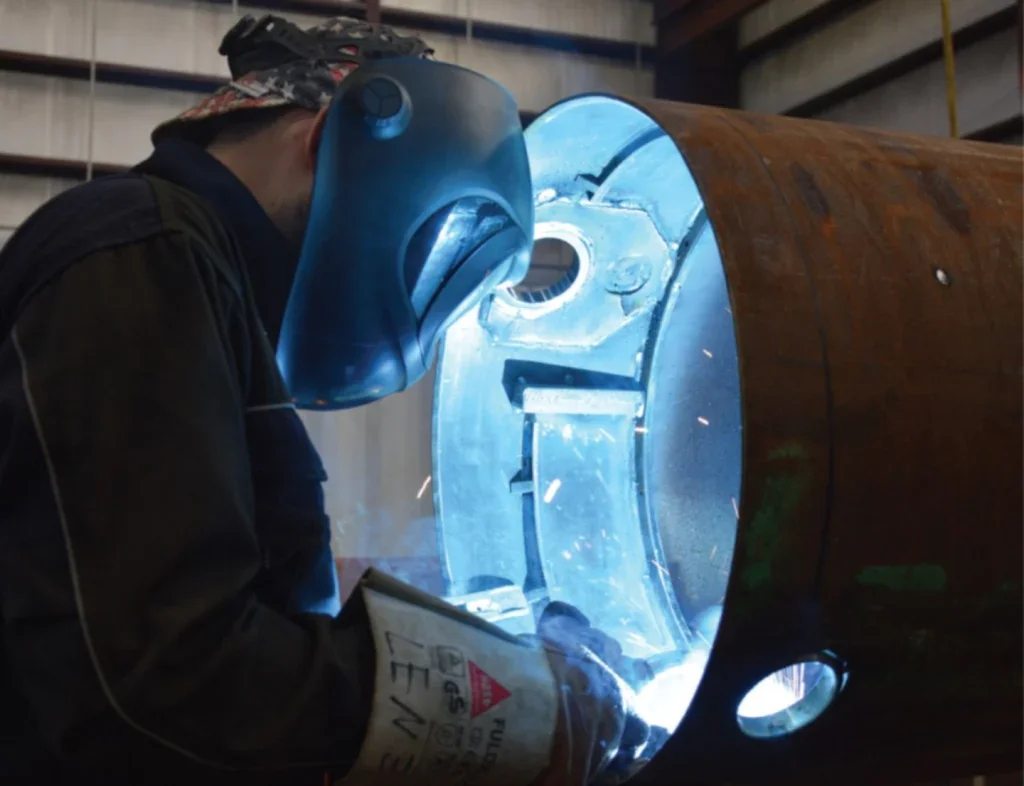
“During test drillings in Munich, it took a couple of days but at the competition we did it in less that a day and it went well,” said Blanke.
Once the screws are installed, only the steel frame is visible above ground and the system also has the advantage of being much lighter than concrete blocks.
The team also changed their pipe storage system to design the machine for a new length record.
“We didn’t want the tunnel length to be limited by the capacity of the pipe storage,” said Blanke.
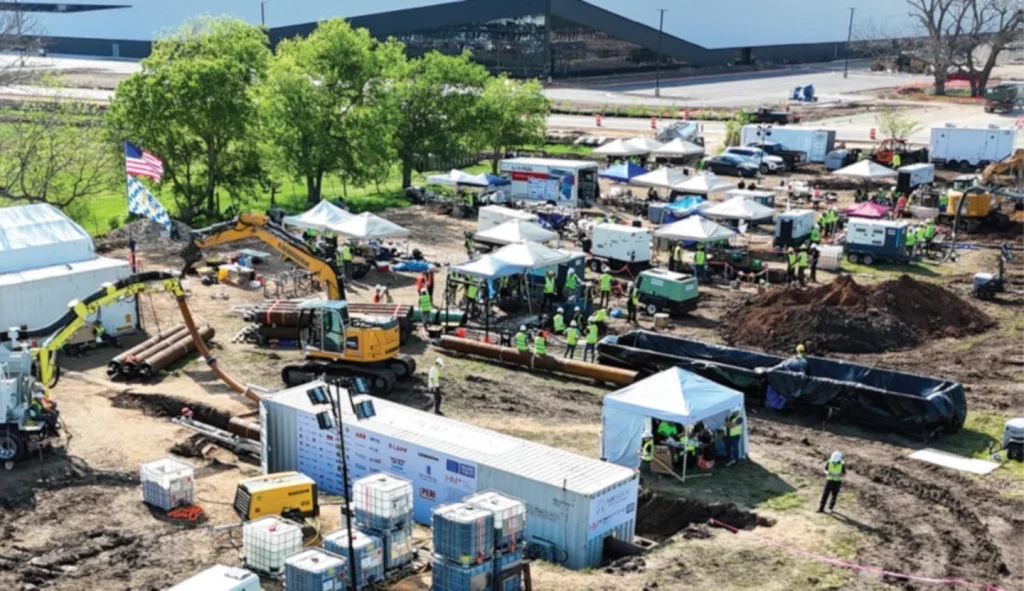
The previous revolver system worked well because everything could be stored in the container and the pipes could be loaded into the revolver before drilling started. The downside, however, was drilling would have to be stopped to reload the revolver.
The answer was a “simpler but more effective solution” for their goal where the pipes were fed into the back of the container. The pipes can be rotated so the connection is made inside the container and the chain of pipes can be extended.
The new system has the added bonus of freeing up space in the container.
Another difference between TUM Boring’s approach and common practice is their jacking frame grabs the pipes from the outside and pushes them forward rather than pushing against the back end of the pipe.
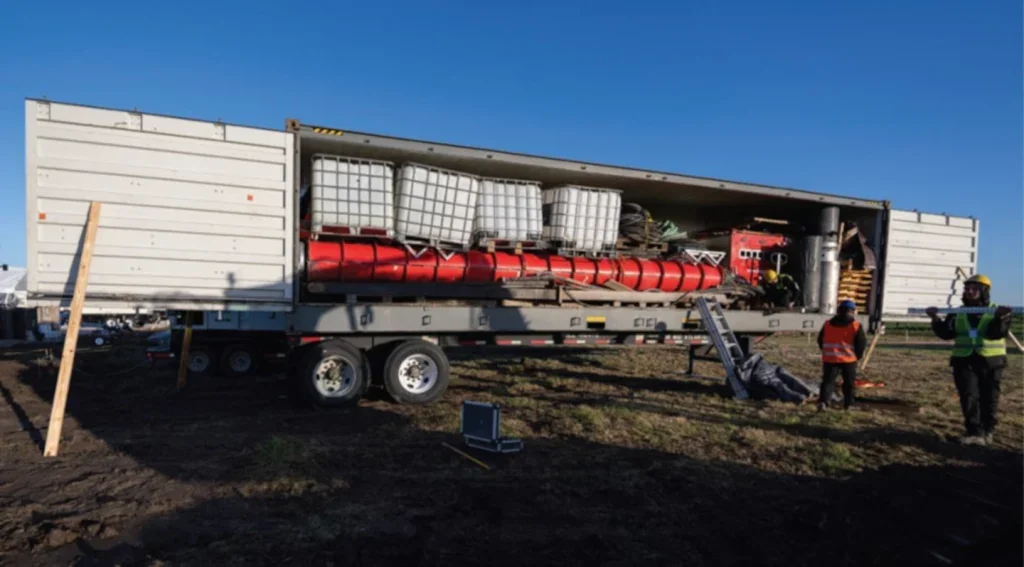
Although TUM Boring won the competition in 2025 and set a new record by a convincing margin, they weren’t entirely satisfied. The team of 19 were so intent on achieving a 30m drive that after the awards ceremony they returned to their machine to continue drilling.
They stopped in the early hours of the morning when it was time to pack up.
“It was very important for us to go as far as possible and try as many solutions,” said Blanke.
The 30m goal had eluded them during the competition because of some unanticipated challenges.
They lost time when the machine hit a harder than expected layer and modifying the cutter wheel made no difference.
“Our machine could go much further but we didn’t have enough torque at our cutterhead to loosen the material fast enough once we reached the deeper layer that was very hard,” said Blanke. “It was way harder than specified in the geology reports.”
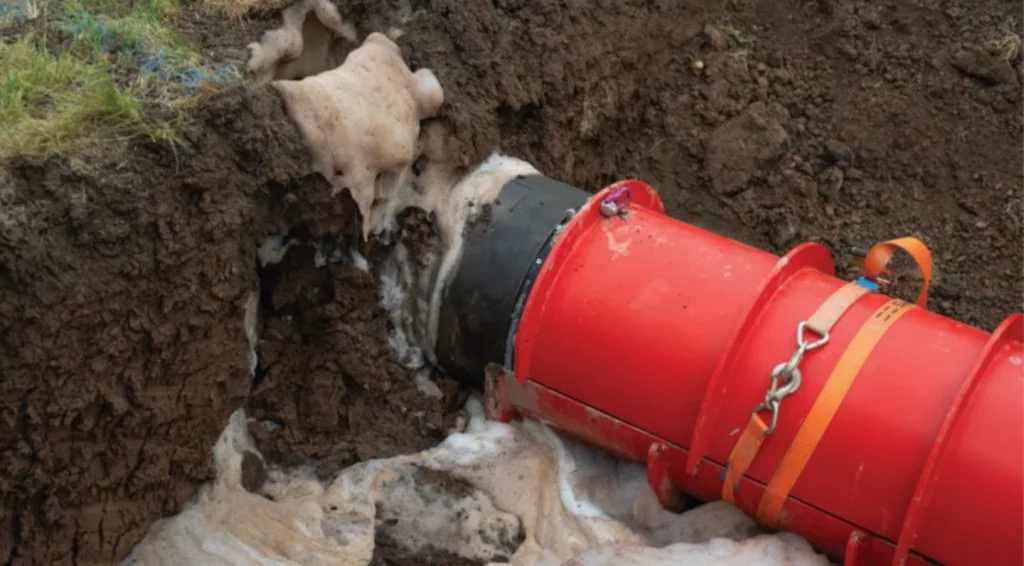
They also lost two hours when an air hose blew up under pressure from the temperature and volume.
“It wasn’t a big problem because we can drive the jacking frame in reverse mode, fix the problem and resume drilling,” said Blanke. “The reverse gear is a new feature of our machine, made possible by the earth screw anchoring system, which can absorb both compressive and tensile forces.”
The two hiccups gave TUM Boring considerations for future competitions.
“In terms of technology, the lesson learned is to increase torque in our cutterhead. The broader learning is to not trust heavily in geology reports and do even more testing,” said Blanke.
While TUM Boring’s machine is not an industry machine, the team hopes their approach will advance tunnelling technology.
“Our machine is not suitable or optimised for industrial use but we think we are demonstrating some concepts that could be applied to industry,” said Blanke.
One is the Power Pipe concept of fitting most of the power electronics and supply systems behind the cutterhead. Dirt and vibration underground are not good companions for electronics but with only one power cable and one data cable, TUM Boring’s system reduces exposure to problems.
Blanke thinks the two-clamp jacking system and the ground screws could also be applied on larger-scale projects.
“The big disadvantage of the industry approach is you have long pullback times when you’re pulling back the frame and you can’t advance the tunnel. In our case, if you’re grabbing the pipes from the outside, rather than the back, you can advance like a worm, continuously working at very high advancement rates,” said Blanke.
All TUM Boring’s technology is open source so it is available to be adopted or adapted.
“If people want to adopt it they should go for it, if they see an improvement for their machines,” said Blanke.
Perhaps the biggest benefit for industry is the education of young engineers, who will carry their knowledge into job roles.
“It is the best opportunity they can get to learn practically,” said Blanke. “They go through the full development cycle from coming up with concepts, cost benefit analysis, doing 3D CAD design of the machine, to manufacturing and working with different contractors to assemble and test it.”
While the Not-a-Boring Competition’s target remains 30m, TUM Boring’s ultimate goal is to drill 100m in the contest. The organisation is currently recruiting students for a new team but whether it enters the 2026 competition is yet to be decided. The decision depends on finding competent people willing to give up their free time for the project – and funding. Committing to the competition and transporting equipment from Germany to Texas is no small undertaking.
Taking part in the competition is fun, and stressful, said Blanke.
“The timeline is tight and we have only one shot. The equipment is so expensive and so heavy we can only build it once,” he said. “And we can only do optimisation in the design phase; once manufacturing starts we have to make it work somehow.”
“We also have to raise funding and get all the companies to deliver their parts – for free and often in record delivery times.”
The logistics of shipping to Texas is another challenge, and one of the most stressful aspects of the project, said Blanke.
“The majority of teams are based in the US so they put their machines on a trailer and don’t have shipping logistics,” he said.
Shipping time cuts the team’s testing period by about six weeks and adds an element of uncertainty.
The logistics of shipping from Europe to the US is something Swissloop Tunneling has also experienced. The team, based at ETH Zurich, ships their 23 tonnes of equipment from Switzerland to Texas in one-and-a-half containers and, with around 35 people, is the largest team at the competition.
Swissloop Tunneling has won Not-a-Boring Competition awards three times: the innovation award in 2021 and 2023 for the liners, and the champion award in 2024. Like TUM Boring, it has yet to decide whether to enter the 2026 competition.
In the meantime, Swissloop Tunneling is developing and testing the third iteration of its machine, Groundhog Gamma.
From the 2021 competition with Groundhog Alpha in Las Vegas, where the ground was rocky, the team developed Groundhog Beta for the 2023 and 2024 competitions in the more clayey ground at Bastrop.
Head of design and communications, Yannick Huber, says the team replaced a cone crusher with a scraping mechanism and added a soil conditioning foam.
They also completely changed the liner system from Groundhog Alpha, which used a pumped, two-component polymer mix. Wanting a more environmentally-sustainable option, the team chose a thermoplast which is pneumatically pumped in as granules.
“It’s heated up and basically printed into the correct shape like a 3D printer would do,” said Huber.
Swissloop Tunneling has now developed Groundhog Gamma, which has significantly increased reliability and efficiency. A larger number of sensors provide more information on temperature, speed and flow, and the team has also improved the erosion, lining and propulsion systems.
“We can measure more exactly where our machine is; we’ve improved the lining system to make it more reliable; and changed the soil conditioning system because last time we had too much foam.
“We’ve also improved the geometry inside the machine to make the material flow better but also to house more sensors,” said Huber.
The electronics have also been changed, from printed circuit boards (PCBs) of Swissloop Tunneling’s own design to off-the-shelf components in 2024.
“When we tested our PCBs in Zurich, we faced an entirely different situation from Texas, where it was so hot that sometimes the PCBs overheated or broke down,” said Huber.
While the PCBs were placed throughout the machine, the new PLC solution sits in a control cabinet outside it.
“It’s much better to work with the software and for access to the controls, it means the engineers don’t have to take the machine apart if we have to reflash the boards,” said Huber.
He describes the propulsion module as “like a snail”, allowing the machine to dig continuously. It effectively works like a gripper TBM, holding onto the extruded liner tunnel wall and pulling the machine forward.
“Our propulsion module is made from two identical and connected components with 16 hydraulic pistons in total. One of two is always active; one is extending and the other is being reset,” said Huber.
“Instead of having to stop each time you’ve dug a short distance to put your tubing elements on the wall, our liner allows us to dig continuously. While we’re digging, we’re also printing the tunnel wall.”
The limiting factor at the moment is that the thermoplast must cool down sufficiently before the machine can progress.
“We heat the material to a high temperature, then get it back down to something more like room temperature so the tunnel wall hardens and we can advance,” said Huber.
Despite that, the liner is such a game-changer that Swissloop Tunneling is considering securing a patent for it. Huber said the system could be adapted for larger projects and the team hopes to apply it to a tunnel of 1m diameter or more in the future.
“In its current form, the system could be used for small urban tunnels for water, electrics or drainage,” said Huber.
The technology is one thing but, as with TUM Boring, educating and enthusing young engineers is a major part of Swissloop Tunneling’s work.
“Swissloop Tunneling is about tunnelling but it’s also about education: preparing students to be the next generation of engineers and enabling them to apply what they learn in lectures in a practical manner,” said Huber.
